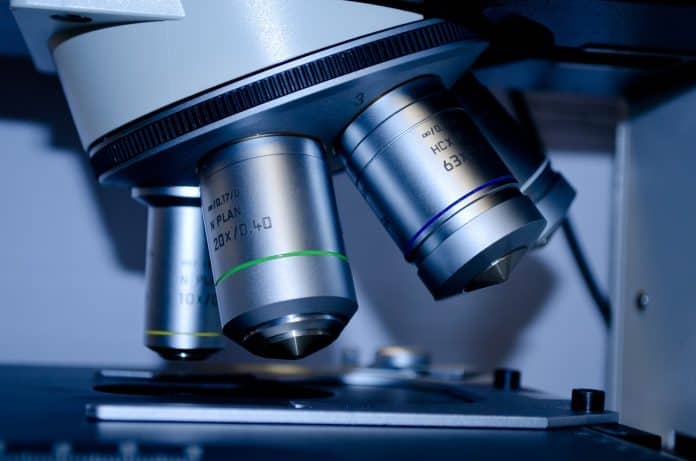By Jamison S. Jaffe, DO
Bladder cancer affects more than 86,000 people in the United States each year, according to the American Cancer Society, with the majority being over age 55.
And while the disease can often be effectively treated, an accurate and timely diagnosis is key.
At Penn Medicine Princeton Health, urologists use special technology called blue light cystoscopy to diagnose and treat bladder cancer.
More Prevalent in Men
Your bladder is an organ that stores urine before it passes out your body. Bladder cancer occurs when abnormal cells in the organ start to grow uncontrollably, forming tumors.
The majority of bladder cancers are superficial meaning the cancer is on the bladder’s lining. More aggressive bladder cancer is muscle invasive, meaning it has spread through the bladder’s lining into the muscle tissue.
The American Cancer Society estimates that 9 out of 10 people with bladder cancer are over age 55, and while both men and women can develop bladder cancer, it is significantly more prevalent in men.
In fact, as the American Cancer Society notes, men have a 1 in 28 chance of developing bladder cancer in their lifetime. For women, the chance is 1 in 89.
Smoking Main Risk Factor
Aside from gender and age, the biggest risk factor for bladder cancer is smoking.
Smoking causes about half of all bladder cancers, and people who smoke are three times as likely to develop bladder cancer than people who don’t, according to the American Cancer Society.
Other risk factors include, exposure to certain industrial chemicals, paints, family history and certain medications and herbal supplements.
Blood in Urine
Blood in the urine is usually the first sign of bladder cancer. The blood may cause your urine to appear orange, pink or brownish.
In some cases, the blood may be invisible and only seen on a urinalysis, which typically is performed as part of a general physical or to help diagnose symptoms.
It is important to note that blood in the urine does not automatically mean you have bladder cancer. Most often it is a sign of infection, kidney or bladder stones or other benign conditions.
Other symptoms that could potentially signal bladder cancer include:
- Frequent urination or feeling the need to urinate without being able to.
- Lower back pain.
- Pain or burning during urination.
However, these symptoms are often associated with other noncancerous conditions, which is why it is crucial to see your doctor or urologist for an accurate diagnosis.
Advanced Diagnostic Technique
Diagnosing bladder cancer typically involves a combination of medical history review, physical exam, and various other tests.
One of the primary diagnostic procedures is cystoscopy, in which a thin, flexible tube — a cystoscope — is inserted into the bladder through the urethra. Traditional cystoscopes have a white light and video camera attached to them.
Cystoscopy enables the doctor to visually inspect the bladder lining for abnormalities, such as tumors or abnormal growths, and surgically remove them.
In some cases, a more advanced technique called blue light cystoscopy may be used.
During this procedure, a photosensitive dye is placed into the bladder. The cancer cells absorb the dye, so when the bladder is examined under blue light the cancerous areas appear to glow fluorescent pink, while healthy tissues remain blue.
The benefits of blue light cystoscopy include:
- Improved detection. Blue light cystoscopy can enhance the visualization of cancerous lesions that may be missed by standard white light cystoscopy alone. This can lead to more accurate diagnosis and staging of bladder cancer.
- More complete tumor removal. By highlighting cancerous lesions, blue light cystoscopy can help surgeons identify and remove tumors more completely, reducing the likelihood of residual cancer cells being left behind.
- Reduced recurrence rates. By facilitating more thorough tumor removal, blue light cystoscopy may help reduce the risk of cancer recurrence when compared to standard white light cystoscopy alone.
- Improved surveillance of previously treated patients. Blue light cystoscopy can be used for surveillance cystoscopy in patients who have previously been treated for bladder cancer, allowing for more accurate detection of recurrent tumors.
You might be a candidate for blue light cystoscopy if:
- You need a cystoscopy.
- Your doctor needs to check for bladder cancer recurrence after a cancer treatment such as chemotherapy that caused inflammation. Inflammation can make it hard to see cancer under white light.
- Your doctor needs more information to determine your treatment plan.
- Other tests and symptoms suggest bladder cancer, but nothing appears on standard cystoscopy.
Treatment for bladder cancer depends on various factors, including the stage and grade of the cancer, as well your overall health and preferences. Treatment options may include surgery to remove the tumor, chemotherapy, immunotherapy, radiation therapy, or a combination of these approaches.
If your doctor suspects you might have bladder cancer, ask them about the use of blue light cystoscopy. Because shining a light on hidden cancer cells enables doctors to better diagnose and treat the disease.
To find a physician with Penn Medicine Princeton Health, call (888) 742-7496 or visit www.princetonhcs.org.
Jamison S. Jaffe, DO, is board certified in urology. He is a member of the medical staff at Penn Medicine Princeton Health and the Medical Director of Urology for Penn Medicine Princeton Medical Center.

